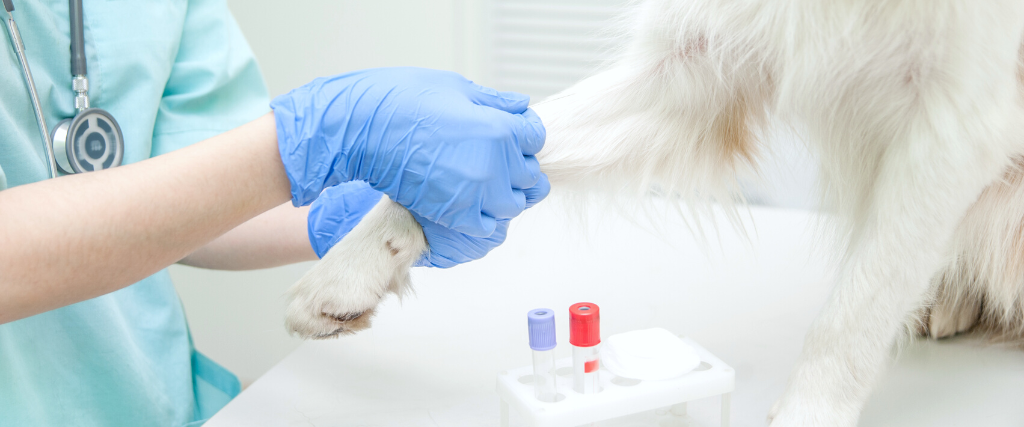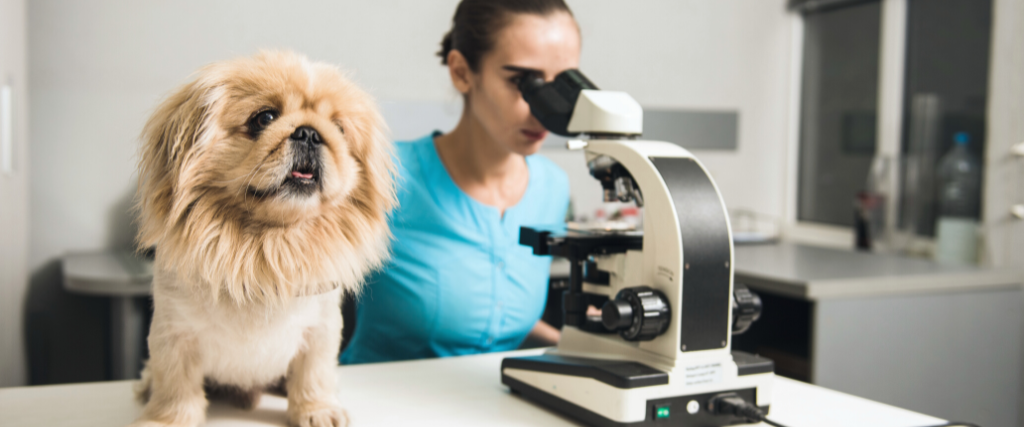When a dog is taken to their veterinarian because they’re not feeling well or acting out of character, the first course of action is a physical examination and lab work. Tests can include blood work, urinalysis, fecal test, or skin sample depending on what your veterinarian suspects is wrong from the physical exam. Lab tests can provide critical information that will help identify the issue and provide a course of action.
The Purpose of Lab Tests
Depending on the type of lab tests done, once results are received, your veterinarian will have vital information about your dog’s hydration, anemia, infection, blood clotting ability, immune system response, intestinal parasites, kidney function, liver function, hormone and electrolyte levels, and more.
Lab tests are just as necessary when a dog is feeling well as when they’re feeling ill. This is because lab tests provide a baseline, telling your veterinarian what values and functions are normal for your dog. When they become sick, new lab tests are compared to those baselines to help determine the issue and treatment. For example, baseline versus updated blood work could show diminished liver or kidney function and help focus medical care in that direction. For this reason, it’s important that basic lab tests are conducted at an annual physical when your dog is feeling well.

Lab tests should also be done prior to any surgical procedure, even for young dogs undergoing a spay or neuter. Checking blood work prior to being put under anesthesia shows a veterinarian that everything is functioning properly and the procedure is safe for your dog.
Sharing Information Before Lab Tests
As a pet owner, you have vital information to share with your veterinarian about how your pet has been behaving, symptoms, and how quickly the illness has progressed. The more information you can provide, the better direction your veterinarian will have regarding which lab tests and diagnostics to run.
Information to share with your veterinarian might include the following:
- If they got into any food or other things around the home
- If they’re experiencing vomiting or diarrhea, and the frequency
- If they’re eating and drinking normally
- If they seem excessively thirsty or producing excess amounts of urine
- If they’re acting lethargic or sleeping more than usual
- If their behavior or demeanor has changed
- If they ingested any foreign objects
Provide all the information you can, even if it feels irrelevant. Every detail will help your veterinarian determine what might be going on with your dog.

How Samples are Collected
Once your veterinarian has a general idea of what might be happening with your dog, they’ll collect or request samples to run lab tests.
Samples can be collected in the following ways:
- Blood – Blood draw collected directly from the vein in the neck or leg
- Fecal – Collected by the owner and brought to the veterinarian or collected at the clinic
- Skin – Impression smear, with the veterinarian taking a slide and pushing it onto your dog’s lesion or scraping some cells from the top layer of skin
- Urine – Collected by either free catch or cystocentesis, which is a sterile needle inserted into the bladder
Effectiveness
Lab tests on dogs are very sensitive and therefore provide a considerable amount of information for your veterinarian to provide a diagnosis and a treatment plan. They are especially important when symptoms haven’t fully presented, catching early-stage disease so treatment can begin before it has progressed or it’s too late to treat. Lab tests combined with a physical examination provide a precise diagnosis so your dog can be treated appropriately and get back to feeling like themselves.
From a cost perspective, conducting lab tests as soon as your dog starts to feel ill is also important. Ignoring the issue or waiting for it to self-resolve could mean more diagnostics and costly tests if a disease has progressed.
Contact us to learn more about lab tests for dogs and why they’re important to your dog’s overall health and longevity.
